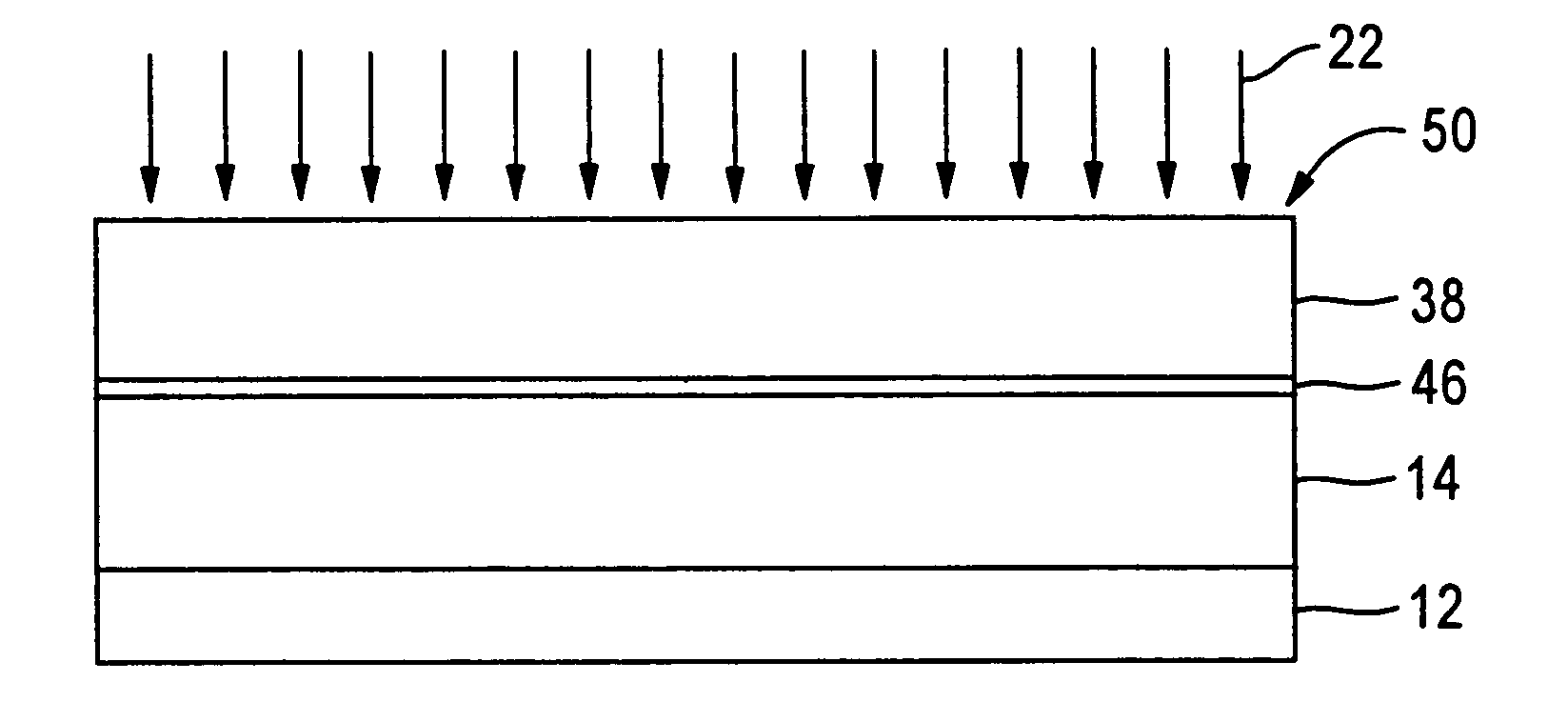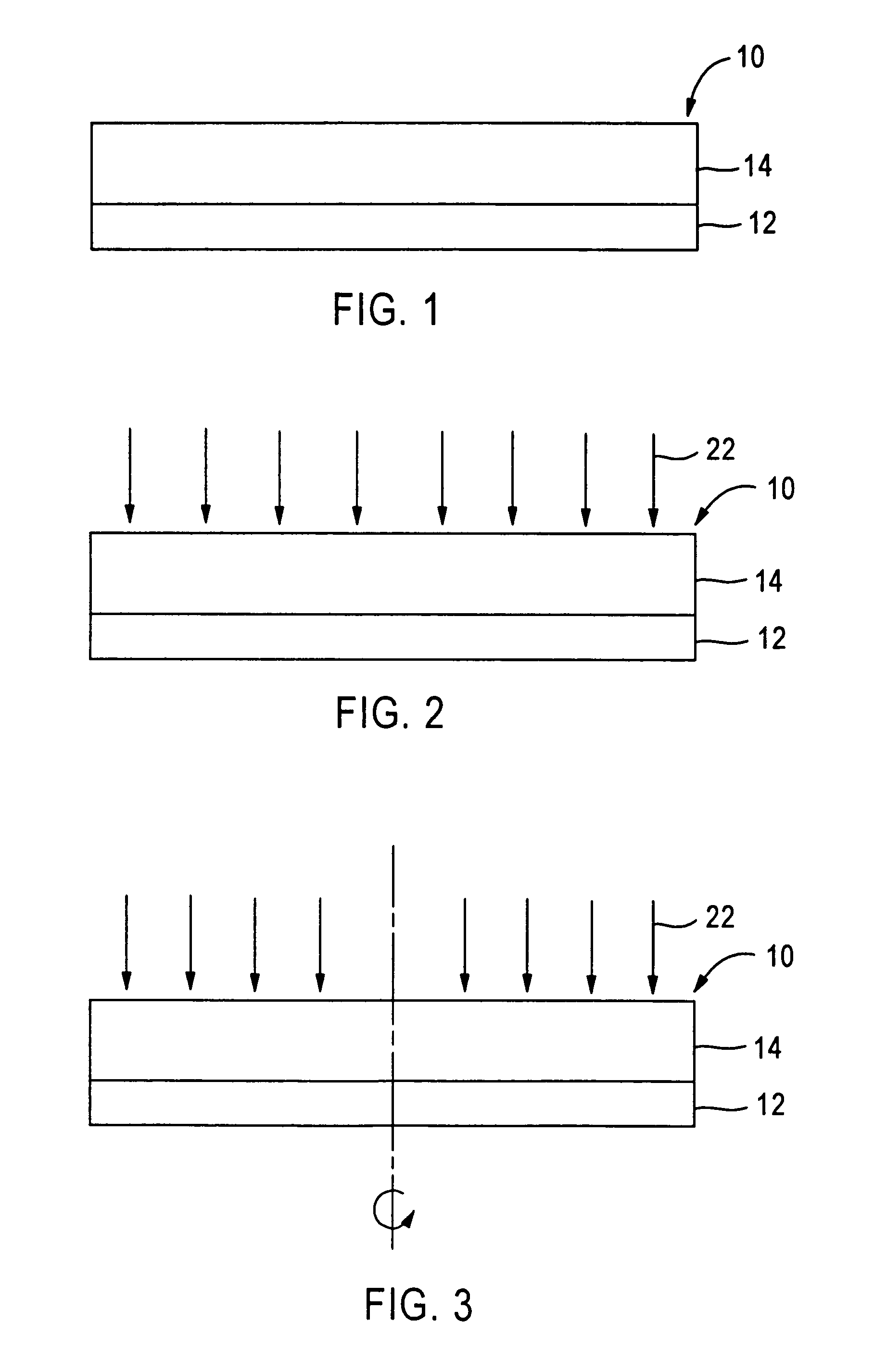Method of forming semiconductor devices by microwave curing of low-k dielectric films
a technology of dielectric film and semiconductor device, which is applied in the direction of semiconductor/solid-state device manufacturing, basic electric elements, electric devices, etc., can solve the problems of reducing manufacturing throughput, increasing manufacturing costs, and difficult to meet the requirements of sub-micron-sized semiconductor device wiring, etc., to reduce thermal stress, reduce manufacturing throughput, and inhibit the formation of silanol bonds
- Summary
- Abstract
- Description
- Claims
- Application Information
AI Technical Summary
Benefits of technology
Problems solved by technology
Method used
Image
Examples
Embodiment Construction
[0054]The present invention enables the production of semiconductor devices with improved performance and reduced feature sizes by exposing dielectric films to microwave radiation to cure the dielectric films. The microwave cured dielectric films provide a dielectric film surface which allows stronger adhesion of overlying layers, including barrier layers, etch-stop layers, and additional dielectric films. The microwave curing densifies the surface of the dielectric films, and makes the surface of the dielectric film more SiO2-like by causing silanol groups to crosslink at the dielectric surface. The lack of silanol bonds prevents the uptake of water and the resulting poisoned via phenomenon.
[0055]The term semiconductor devices, as used herein, is not to be limited to the specifically disclosed embodiments. Semiconductor devices, as used herein, include a wide variety of electronic devices including flip chips, flip chip package assemblies, transistors, capacitors, microprocessors, ...
PUM
 Login to View More
Login to View More Abstract
Description
Claims
Application Information
 Login to View More
Login to View More - R&D
- Intellectual Property
- Life Sciences
- Materials
- Tech Scout
- Unparalleled Data Quality
- Higher Quality Content
- 60% Fewer Hallucinations
Browse by: Latest US Patents, China's latest patents, Technical Efficacy Thesaurus, Application Domain, Technology Topic, Popular Technical Reports.
© 2025 PatSnap. All rights reserved.Legal|Privacy policy|Modern Slavery Act Transparency Statement|Sitemap|About US| Contact US: help@patsnap.com



